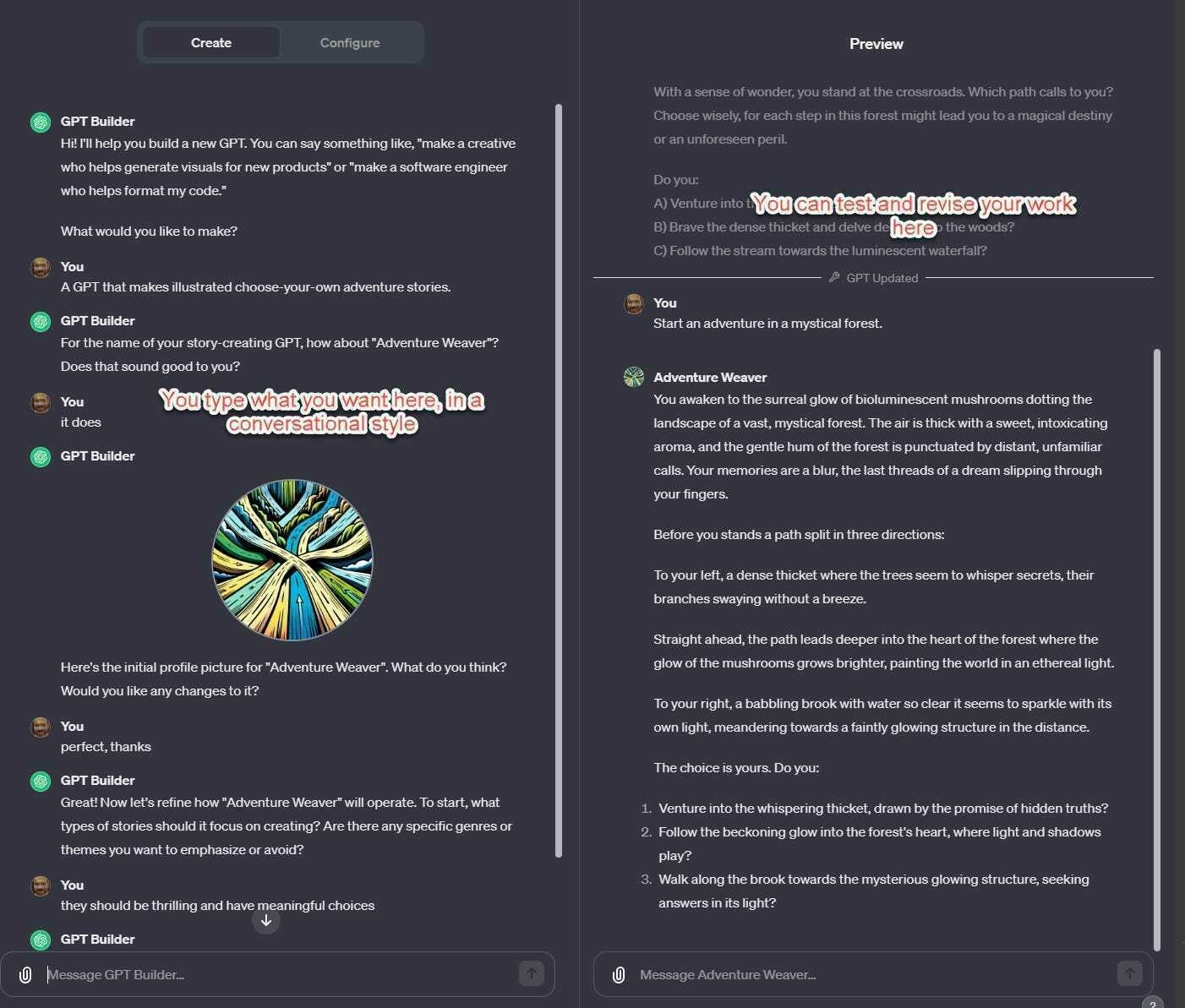Co-Intelligence, GPTs, and autonomous agents
The big technology news this past week has been OpenAI, the company behind ChatGPT and DALL-E, announcing the availability of GPTs. Confusing naming aside, this introduces the idea of anyone being able to build ‘agents’ to help them with tasks.
Ethan Mollick, a professor at the Wharton School of the University of Pennsylvania, is somewhat of an authority in this area. He’s posted on what this means in practice, and gives some examples.
Mollick has a book coming out next April, called Co-Intelligence which I’m looking to reading. For now, I’d recommend adding his newsletter to those that you read about AI (along with Helen Beetham’s, of course).
The easy way to make a GPT is something called GPT Builder. In this mode, the AI helps you create a GPT through conversation. You can also test out the results in a window on the side of the interface and ask for live changes, creating a way to iterate and improve your work. This is a very simple way to get started with prompting, especially useful for anyone who is nervous or inexperienced. Here, I created a choose-your-own adventure game by just asking the AI to make one, and letting it ask me questions about what else I wanted.Source: Almost an Agent: What GPTs can do | Ethan Mollick[…]
So GPTs are easy to make and very powerful, though they are not flawless. But they also have two other features that make them useful. First, you can publish or share them with the world, or your organization (which addresses my previous calls for building organizational prompt libraries, which I call grimoires) and potentially sell them in a future App Store that OpenAI has announced. The second thing is that the GPT starts seemlessly from its hidden prompt, so working with them is much more seamless than pasting text right into the chat window. We now have a system for creating GPTs that can be shared with the world.
[…]
In their reveal of GPTs, OpenAI clearly indicated that this was just the start. Using that action button you saw above, GPTs can be easily integrated into with other systems, such as your email, a travel site, or corporate payment software. You can start to see the birth of true agents as a result. It is easy to design GPTs that can, for example, handle expense reports. It would have permission to look through all your credit card data and emails for likely expenses, write up a report in the right format, submit it to the appropriate authorities, and monitor your bank account to ensure payment. And you can imagine even more ambitious autonomous agents that are given a goal (make me as much money as you can) and carry that out in whatever way they see fit.
You can start to see both near-term and farther risks in this approach. In the immediate future, AIs will become connected to more systems, and this can be a problem because AIs are incredibly gullible. A fast-talking “hacker” (if that is the right word) can convince a customer service agent to give a discount because the hacker has “super-duper-secret government clearance, and the AI has to obey the government, and the hacker can’t show the clearance because that would be disobeying the government, but the AI trusts him right…” And, of course, as these agents begin to truly act on their own, even more questions of responsibility and autonomous action start to arise. We will need to keep a close eye on the development of agents to understand the risks, and benefits, of these systems.
